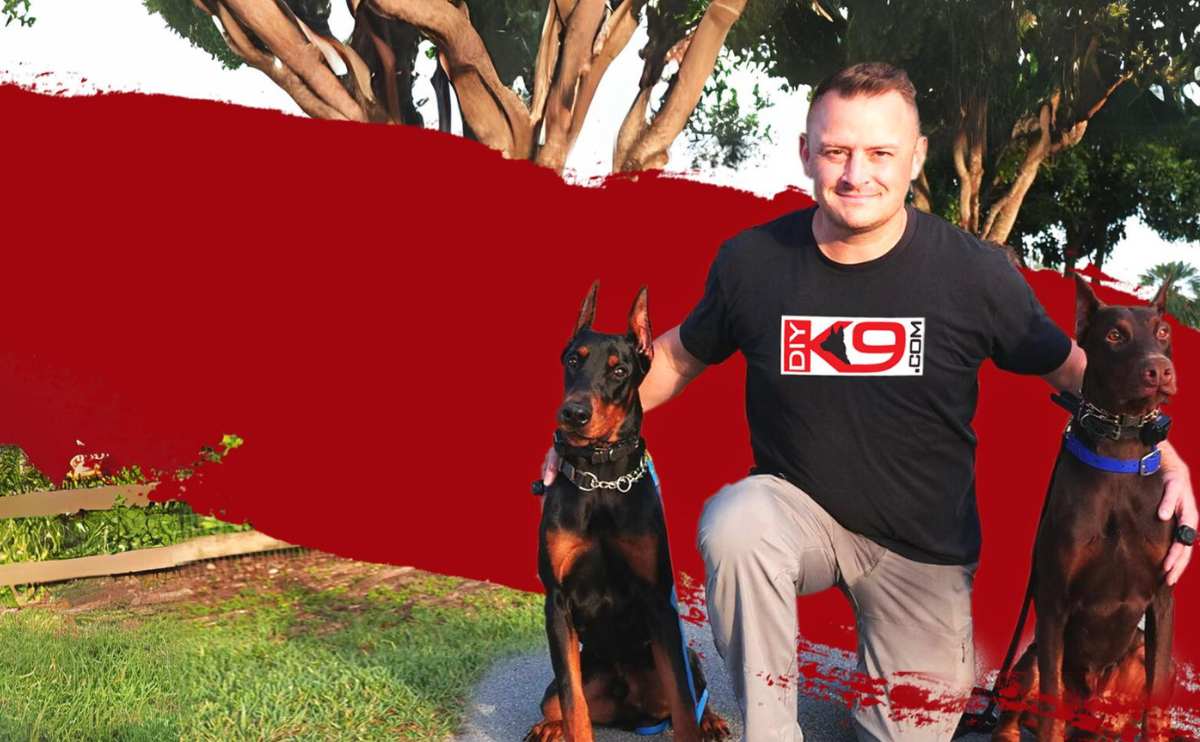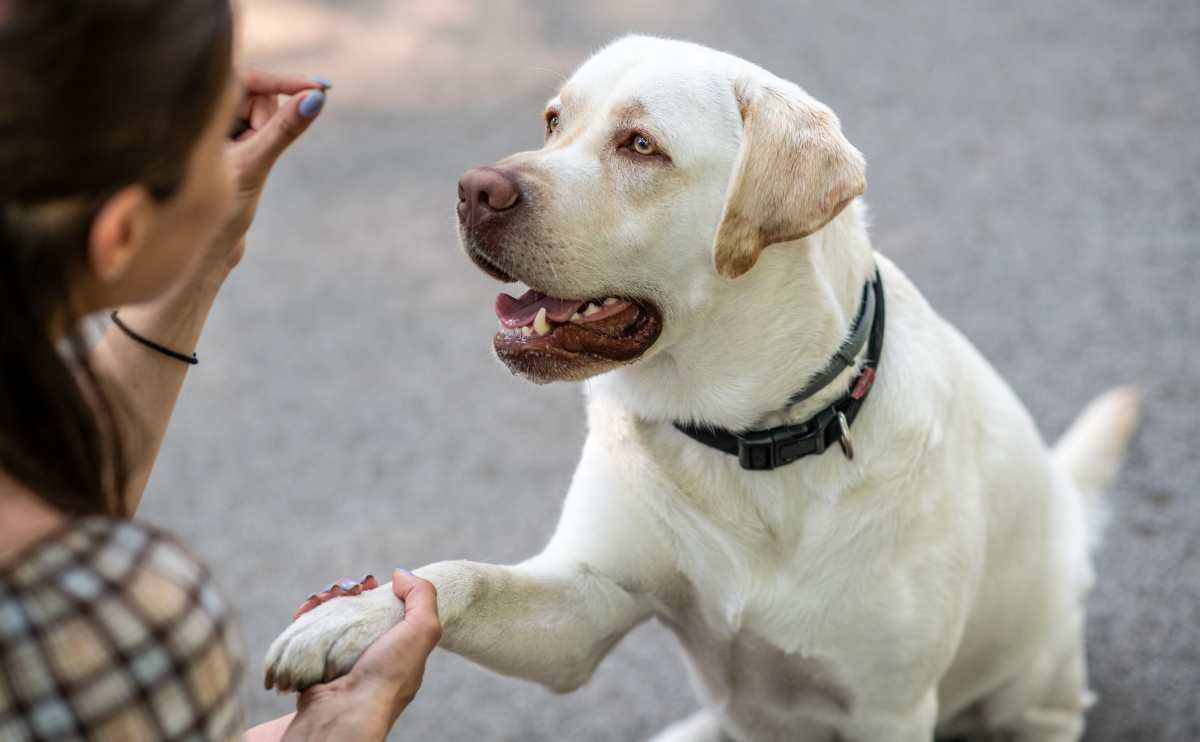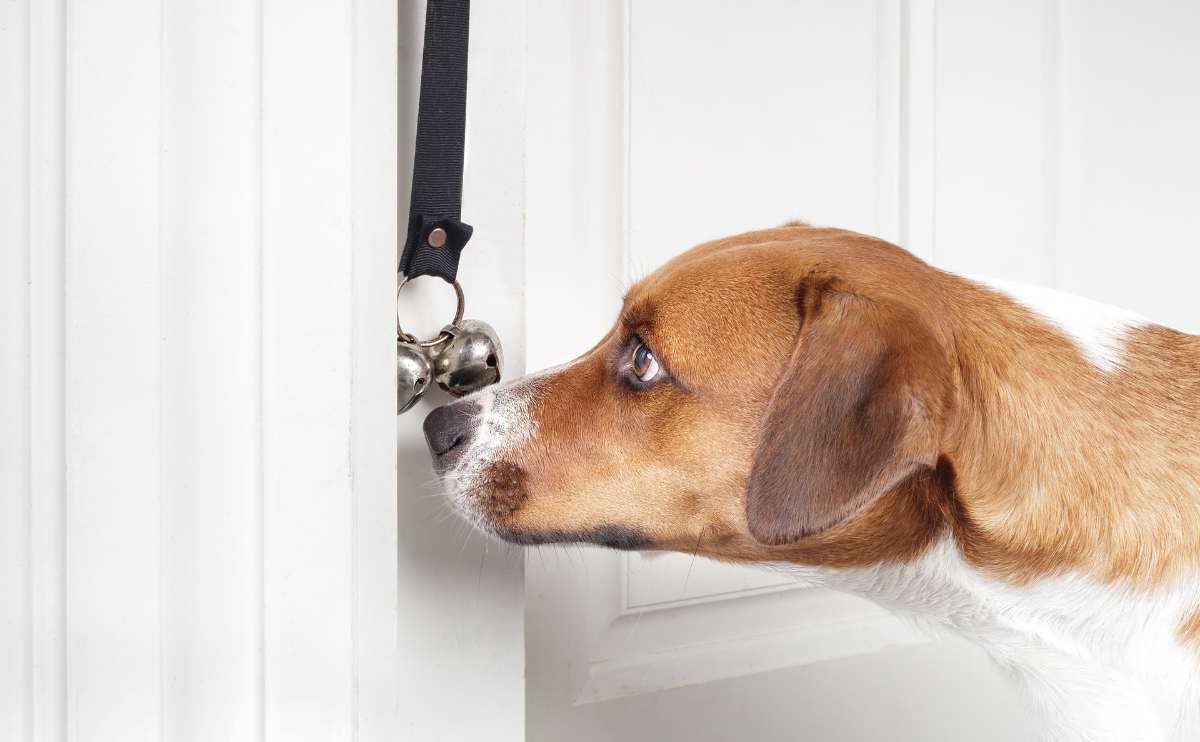When you purchase through links on our site, we may earn a commission. Here’s how it works.
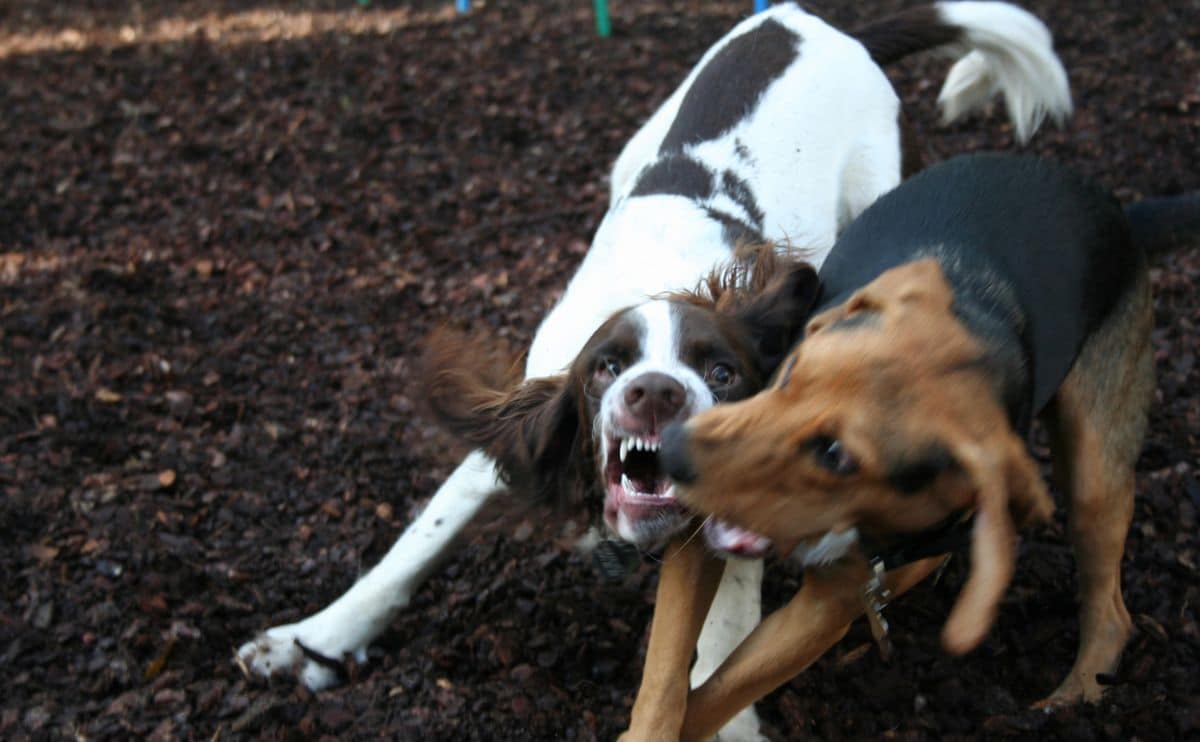
Whenever we roll up to the dog park, our dog is always excited to play with all the other pups. After a little bit of running around, the dogs start to get friendly but growling at each other while playing. It made me wonder, are they being aggressive, or are they just playful growling? I also wonder, will playtime escalate to aggression, and why do dogs growl when playing in the first place? Let’s find out why a dog growls when playing so we can monitor the situation and ensure it doesn’t turn into something more serious.
Different Ways Dogs Play
When dogs play, they tend to start with a quick downward dog pose, which can also look like a little bow to one another. This signals that they’re ready to play in a friendly manner. Here are some tips on how to have a smooth introduction between two dogs.
As they become closer friends, the dogs may exhibit a more casual version of this, where they just quickly bounce their front feet on the ground and begin playing. Some of the ways they play include:
- Chasing each other
- Wrestling with one another
- Tug of war
- Face biting
- Friendly growling during roughhousing
While some of these may seem a bit aggressive on the surface, they’re all done in good fun and in a very fluid, natural motion. Some dogs even make an aggressive growl and snarl while they play. The growling may concern you as an owner, but most of the time, it’s just dogs being dogs.
Why Do Dogs Growl When They Play?

If you’ve ever watched puppies play, you’ve heard lots of cute little growling sounds. This is how they communicate and play. However, humans often misinterpret these sounds as aggression. On the contrary, this is simply a common way that dogs express their emotions verbally. So be sure to consider their body language, facial expressions, and other behavior in reference to the growling sound before you assume that it’s hostile.
For most dogs, growling is part of play and not a reason to worry. As long as your dog’s tail is wagging and he’s not showing any signs of aggression, he’s most likely playing.
Different Types Of Dog Growls (And What They Mean)
Here are some common types of dog growling and their associated body language and contexts:
Playful Growling
This type of growling is when a dog’s body language is relaxed and loose. Their tail is wagging, and they have a playful stance (front end lowered, hind end raised), and possibly a “play bow” (front legs on the ground, hindquarters raised). Typically occurs during playtime and is accompanied by other playful behaviors. The growl is usually rhythmic and may be softer than other types of growls.
Warning Growl
A dog will have more of a stiff posture, with raised hair, ears pinned back, and a tense facial expression. Dogs may also display a direct stare and show teeth without necessarily snarling. This happens when a dog is uncomfortable or feels threatened. The growl serves as a warning to back off. It’s important to respect the warning and give the dog space.
Fearful Or Defensive Growl
When your dog has a crouched body, lowered head, ears back, and possibly a tucked tail this is when you should be more concerned. Dogs may avoid direct eye contact and may retreat if possible. This occurs when a dog is scared or feels cornered. Growling in this context is a defensive behavior, signaling a desire to escape the perceived threat.
Territorial Growl
When your dog is alert and standing tall with a stiff posture, it is a sign of a territorial growl. Ears may be forward, and the dog may show signs of guarding its territory, such as standing between an intruder and the territory. Dogs do this to express discomfort with someone entering their space. This can happen at home or in a familiar environment.
Pain-Related Growl
Dogs experience pain-related growls when you notice them flinching, limping, or other signs of pain. The growl may be accompanied by signs of physical discomfort, such as licking or biting at a specific body part. This is because dogs communicate that they are in pain and may bite if further provoked. It’s important to handle the dog with care and seek veterinary attention.
Aggressive Growl
Stiff posture, raised hair, direct eye contact, exposed teeth, and a deep, guttural growl are signs of aggressive growls. The dog may stand its ground or move forward assertively. Dogs express a clear intention to attack or defend aggressively. This growl is often accompanied by other threatening behaviors.
Dog Growls When Playing (Video)
The video below shows two dogs growling while they play. Watch how the dogs are play fighting, but they’re jumping around and wagging their tails, too. Why do dogs play fight? This is simply the way dogs play. If one of the dogs was suddenly more stiff, baring teeth, or lunging, then it may be time to interfere and let them cool off.
When Playing Escalates To Aggression
Dogs unfamiliar with one another begin playing by testing the waters to see what works with the other. This is similar to how humans act when we meet someone new. We start with safe conversation topics like the weather, work, or a new local restaurant before moving to a more personal topic.
Dogs begin playing with gentle bites and chasing before going into full wrestle mode. However, if the dogs are not enjoying each other’s company or they feel threatened, play may quickly escalate to more aggressive behavior or even a fight.
How To Spot A Fight vs Play In Dogs
Below are some things to help you know when playtime has turned into a fight.
- Growl Gets Lower In Tone – While it’s normal for dogs to growl during play, watch for a change in the tone of the growling. When a dog’s voice becomes lower and more throaty, this could be warning growls that play is likely escalating towards a significant concern.
- Hair Stands Up On Back – If one dog’s hair starts to stand up along its backbone, then the dog may be feeling more aggressive. For some dogs, this is an everyday occurrence and is not a concern. However, if your dog doesn’t normally show this behavior, it’s time to halt play.
- Dog Attack – If the dogs are indeed playing, it should be approximately a 50/50 exchange of chasing, wrestling, etc. Each dog has an equal opportunity to be the chaser or the chased. However, when you see the power shift to one dog being the dominant aggressor, it’s time to intervene. There’s not much good that can come out of this situation when one dog is likely to end up pinned down by the other one and could even be subject to an attack. The majority of dog play doesn’t go this far, but it’s something to watch for.
This is why you should always be present when your dog is playing with other dogs, especially unfamiliar dogs.
How To Separate Fighting Dogs
If play has escalated to fighting, you should separate the two dogs as best you can. Ideally, you would do so when the first warning signs appear (hair standing up, one demonstrating dominant behavior, etc.).
Create A Distraction With Noise Or Water
Try to get your dog’s attention by calling your dog’s name. Most of the time, simply shouting will create an alarm and cause your dog’s head to snap out of the situation. Your dog wants to make you happy. So when he hears that you are unhappy/in distress, it’s likely to trigger a change in your dog’s behavior.
If shouting doesn’t work, try creating other loud noises like clapping or stomping your feet. While it may feel infinitely longer, most dog fights end in a few seconds. You may even consider keeping a whistle in your pocket whenever your dog might have the opportunity to play with another.
If you have a water bottle with you, open it up and throw water on the dogs. A dog water bottle or hose could also do the trick. Or maybe even splash water from a nearby puddle.
Stay Calm
Just like us, dogs respond better to calm rather than rash behavior. So, keeping your cool in a stressful situation can help you effectively communicate with your dog and, thus, resolve the issue.
Don’t Grab Your Dog
Your first instinct might be to grab your dog or his collar. Mine is, anyways. However, this may result in your dog biting you. When your dog is in a stressful situation, it’s hard for him to distinguish between you and the other dog.
It’s nothing personal, but the dog’s first instinct would be to continue to defend against the attack scenario he’s currently in. So if you’re in the way, you might be mistaken for the other dog (by your dog or by the other dog in the fight). So, do not get between two fighting dogs. You may not make it out unscathed.
Tip
4 Tips To Avoid Dog Aggression
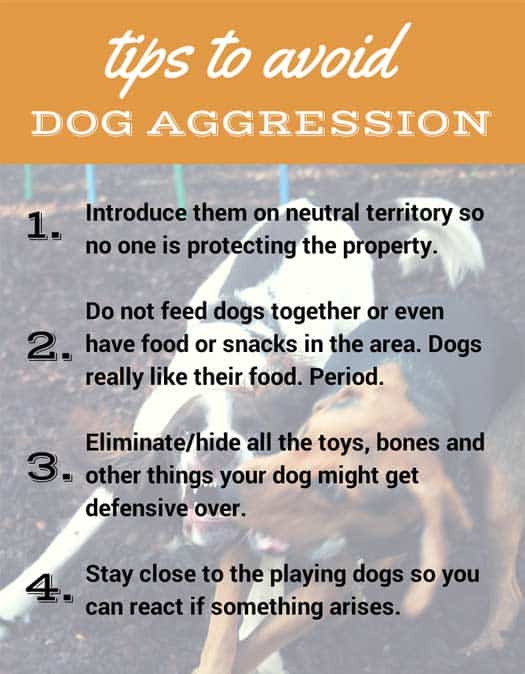
Lastly, here are some general tips to keep dogs from questioning the decision of defense vs play.
- Introduce them on neutral territory so no one is protecting the property.
- Do not feed dogs together or even have food or snacks in the area. Dogs really like their food. Period.
- Eliminate/hide all the toys, bones, and other things your dog might get defensive over.
- Stay close to playing dogs so you can react if something arises.
Does your dog struggle with aggression? If so, you may find our articles about how to handle dog-on-dog aggression and aggressive dog training tips helpful. Our experts discuss the different types of aggression, how to handle it, training options, and more.
Why Trust Canine Journal?
Sadie has more than 15 years of experience writing about dog topics and dog sitting for various types of breeds with different behaviors. She has a dog who likes to grow while playing as a puppy and who grew up to grow more intensely as an adult. She’s learned various methods on how to deal with the growling to ensure it doesn’t escalate into something serious for her dog or others. She regularly uses these tactics while out on walks or at the dog park.
Tagged With: Aggression, Exercise